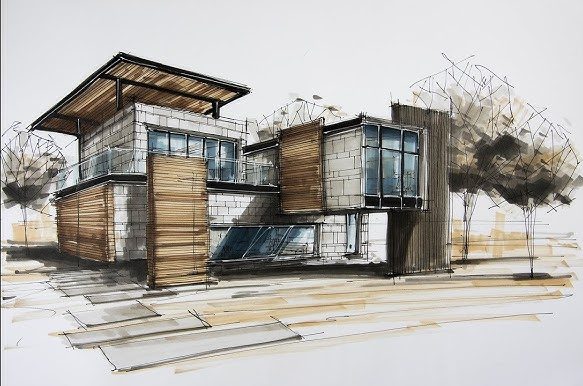Maximizing space through innovative architectural solutions has become a crucial element in modern design, especially as urban areas become more crowded and living spaces shrink. Architects and designers are employing a variety of strategies to create functional, aesthetically pleasing environments that feel spacious, even within confined areas. One of the key methods used is the concept of open-plan living, where walls between rooms are minimized or removed entirely to create a sense of fluidity and openness. This not only makes a space feel larger but also encourages multifunctional living, where rooms serve multiple purposes, such as a kitchen that also functions as a dining and workspace. Another technique is the use of built-in furniture, such as shelving units, foldable tables, and pull-out beds, which can be tucked away when not in use, saving valuable floor space. Vertical design solutions, like lofted areas and mezzanines, take advantage of high ceilings, creating additional living or storage areas without expanding the building’s footprint.

Innovative use of materials also plays a role in maximizing space. Lightweight, translucent materials like glass and polycarbonate allow for the creation of partitions that do not visually break up a room, maintaining a sense of continuity. Mirrors and reflective surfaces are frequently used to enhance the perception of space by reflecting light and creating an illusion of depth. In addition to visual tricks, smart home technology contributes to more efficient use of space by embedding functionality into walls and furniture. For instance, lighting, heating, and entertainment systems can be controlled through integrated panels or mobile devices, reducing the need for physical switches, thermostats, and other hardware. Sustainability is another factor driving innovative space-saving designs. Many Outsourced BIM architects are now incorporating eco-friendly practices, such as using recycled materials and designing spaces that maximize natural light and ventilation, reducing the need for artificial lighting and air conditioning. Movable walls and modular designs are gaining popularity as they allow spaces to be reconfigured easily, adapting to the changing needs of occupants.
For example, a movable partition can convert a studio apartment into a one-bedroom unit, providing flexibility without the need for permanent construction. In urban settings, rooftop gardens and terraces are being used to extend living spaces outdoors, creating green oases that provide relaxation areas while also contributing to better air quality and energy efficiency. Finally, space-saving innovations also extend to communal living concepts, particularly in co-living or senior housing developments, where shared amenities like kitchens, lounges, and laundry areas reduce the need for these facilities in individual units, maximizing personal living spaces while promoting social interaction. In essence, innovative architectural solutions are not just about fitting more into less but about rethinking how we live, move, and interact within our spaces, ensuring that every square foot is utilized effectively while maintaining comfort, style, and sustainability.
